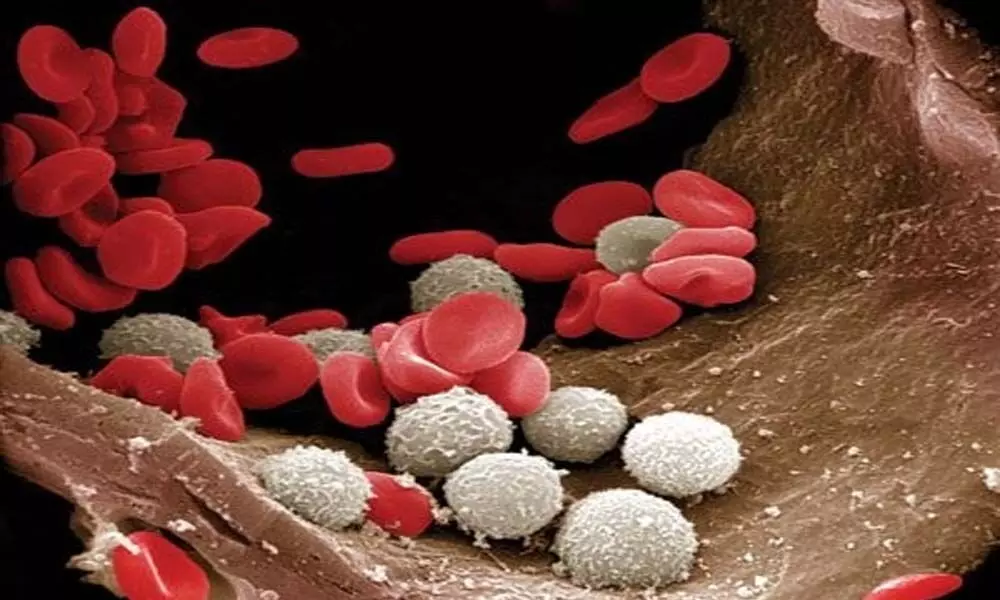Live
- Almonds are a key to faster muscle recovery after exercise: Study
- No govt faced so much criticism than Revanth-led Cong in 11 months: Kavitha
- Balineni signed SECI agreement, says Chevireddy
- Infant kidnapped from Niloufer Hospital rescued, cops arrest 3
- Sunny Leone reflects on challenges and preparations for ‘Shero’
- Hyderabad Saree Festival 2024 kicks off in a grand manner
- Speed up Veligonda project works, CPM urges govt
- 10 career opportunities with a public policy degree
- TG Medical Council cracks whip on fake doctors
- TTD takes up mammoth waste management exercise
Just In
Covid-19 infection significantly changes our blood cells: Study


Covid-19 infection significantly changes our blood cells: Study
Covid-19 infection has the potential to significantly change the size and stiffness of red and white blood cells, a team of German scientists has found.
London : Covid-19 infection has the potential to significantly change the size and stiffness of red and white blood cells, a team of German scientists has found.
In some cases, the effect may continue for months, a possible reason why some affected people continue to complain of symptoms long after an infection (also called long covid).
During Covid disease, blood circulation is often impaired, and dangerous vascular occlusions can occur, and oxygen transport is limited. These are all phenomena in which the blood cells and their physical properties play a key role.
To investigate this aspect, a team of scientists from the Max Planck Institute for the Science of Light (MPL), the Friedrich Alexander University Erlangen-Nuremberg and the German Centre for Immunotherapy measured the mechanical states of red and white blood cells.
"We were able to detect clear and long-lasting changes in the cells -- both during an acute infection and even afterwards," reports Professor Jochen Guck, managing director of MPL. The team has published their results in the Biophysical Journal.
The team examined more than four million blood cells from 17 patients acutely ill with Covid-19, from 14 people who had recovered and 24 healthy people as a comparison group, using a self-developed method called real-time deformability cytometry (RT-DC).
In this method, the researchers send the blood cells through a narrow channel at high speed. In the process, the leukocytes and erythrocytes are stretched. A high-speed camera records each of them through a microscope, and custom software determines which cell types are present, and how big and deformed they are.
They found that the size and deformability of the red blood cells of patients with the disease deviated strongly from those of healthy people. This indicates damage to these cells and could explain the increased risk of vascular occlusion and embolisms in the lungs.
In addition, the oxygen supply, which is one of the main tasks of the erythrocytes, may be impaired in infected persons. Lymphocytes (one type of white blood cell responsible for the acquired immune defense) were in turn significantly softer in Covid-19 patients, which typically indicates a strong immune reaction.
The researchers made similar observations for neutrophil granulocytes -- another group of white blood cells involved in the innate immune response. These cells even remained drastically altered seven months after the acute infection.
"We suspect that the cytoskeleton of immune cells, which is largely responsible for cell function, has changed," says Marketa Kubankova, from MPL.

© 2024 Hyderabad Media House Limited/The Hans India. All rights reserved. Powered by hocalwire.com






